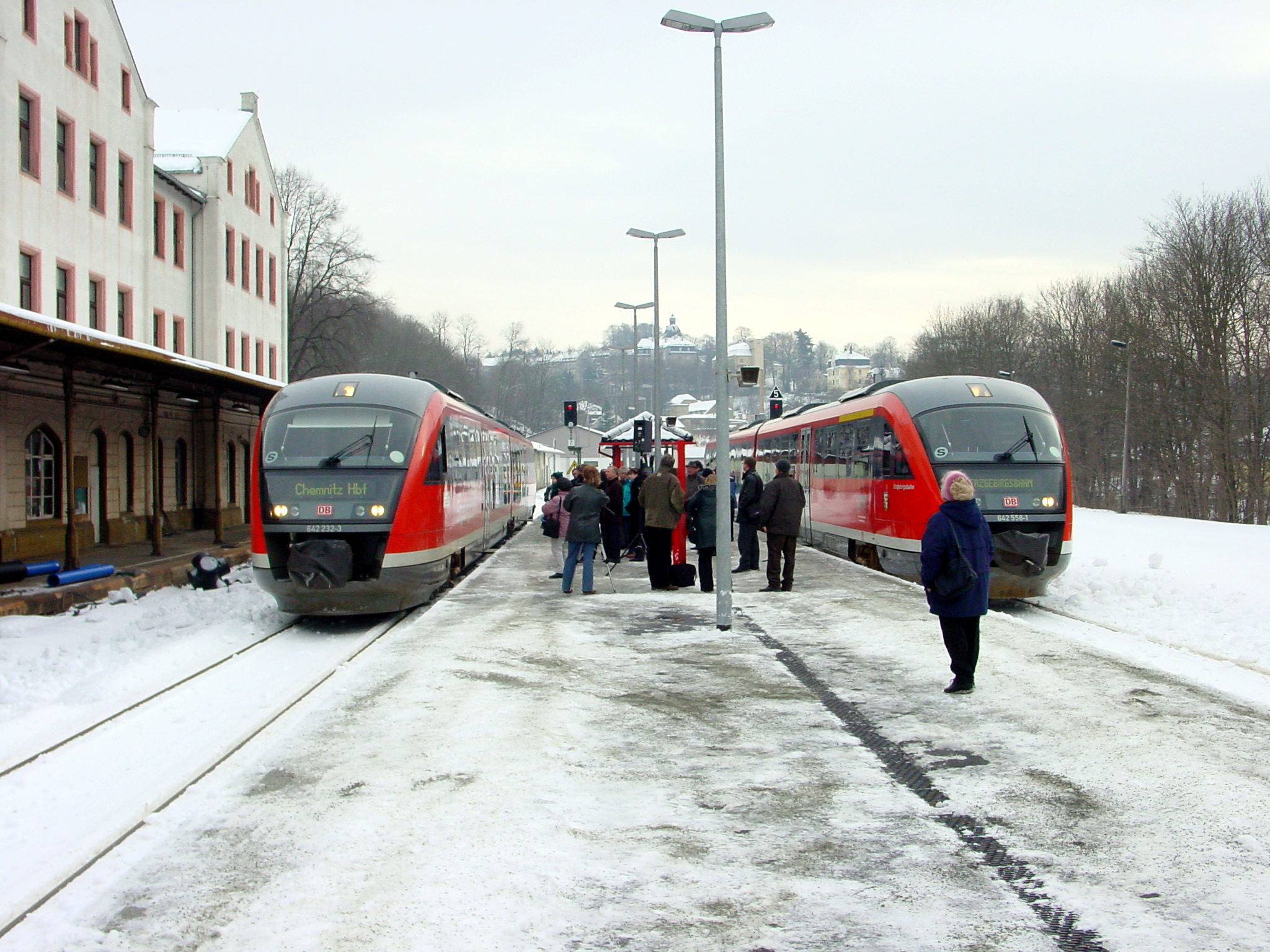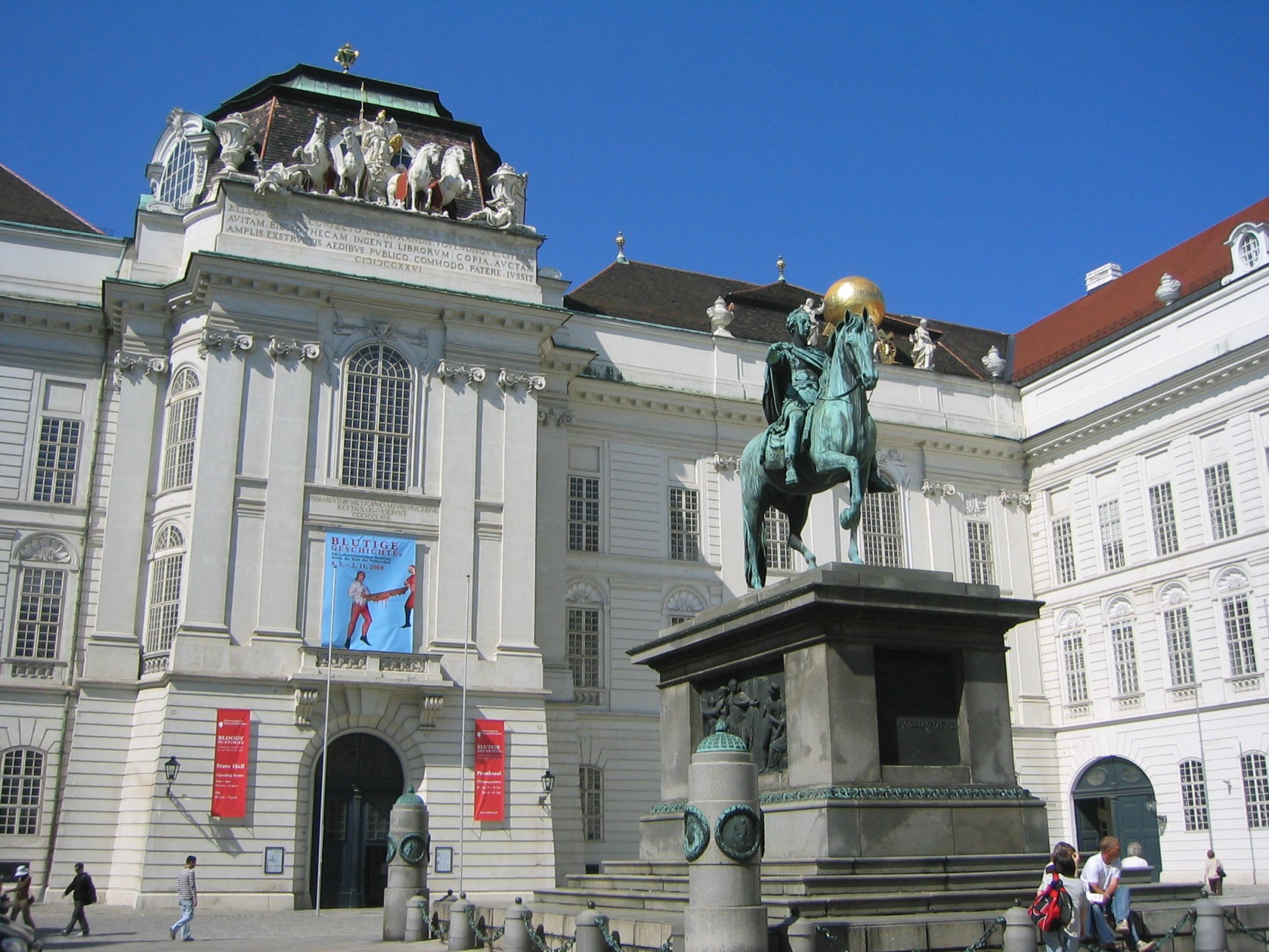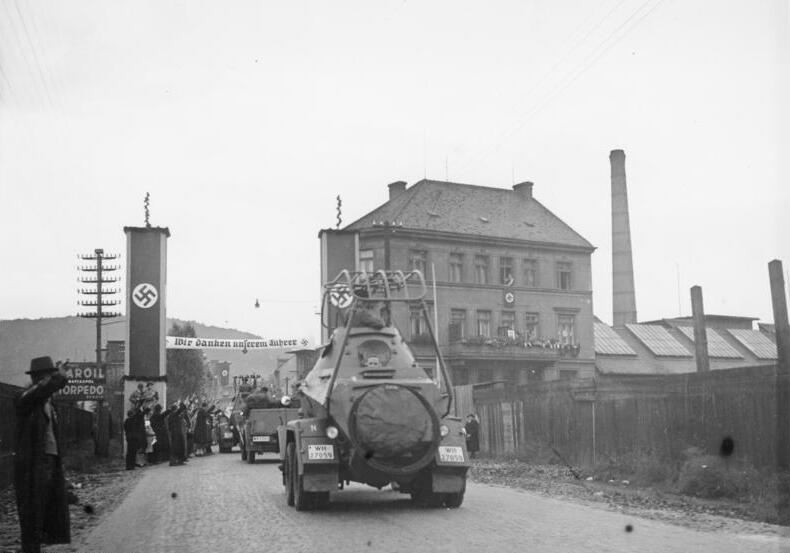|
Vejprty–Annaberg-Buchholz Railway
The Vejprty–Annaberg-Buchholz railway (german: Bahnstrecke Vejprty–Annaberg-Buchholz unt Bf) is a branch line in the Czech Republic and the German state of Saxony. The line extends the Chomutov–Vejprty/Reitzenhain railway at Vejprty (Weipert), crossing the Czech-German border and running via Cranzahl to Annaberg-Buchholz. It has been operated since 2001 by Erzgebirgsbahn, which is part of DB Regio. History After the opening of the Chemnitz–Annaberg line in 1866, the ''Annaberger Eisenbahncomitee'' (Annaberg railway committee) called for a continuation of the line through the Ore Mountains (Erzgebirge) to Bohemia. At the time, the only line on the south side of the Erzgebirge was the Aussig-Teplitz Railway (''Aussig-Teplitzer Eisenbahn''), connecting Aussig (now Ústí nad Labem) and Teplitz (now Teplice). On 28 August 1865, the Annaberg committee finally procured the grant of a concession by the Austrian government for a "Bohemian–Saxon connecting railway" (''Säch ... [...More Info...] [...Related Items...] OR: [Wikipedia] [Google] [Baidu] |
Saxony
Saxony (german: Sachsen ; Upper Saxon: ''Saggsn''; hsb, Sakska), officially the Free State of Saxony (german: Freistaat Sachsen, links=no ; Upper Saxon: ''Freischdaad Saggsn''; hsb, Swobodny stat Sakska, links=no), is a landlocked state of Germany, bordering the states of Brandenburg, Saxony-Anhalt, Thuringia, Bavaria, as well as the countries of Poland and the Czech Republic. Its capital is Dresden, and its largest city is Leipzig. Saxony is the tenth largest of Germany's sixteen states, with an area of , and the sixth most populous, with more than 4 million inhabitants. The term Saxony has been in use for more than a millennium. It was used for the medieval Duchy of Saxony, the Electorate of Saxony of the Holy Roman Empire, the Kingdom of Saxony, and twice for a republic. The first Free State of Saxony was established in 1918 as a constituent state of the Weimar Republic. After World War II, it was under Soviet occupation before it became part of the communist East Ger ... [...More Info...] [...Related Items...] OR: [Wikipedia] [Google] [Baidu] |
Bundesstraße 101
''Bundesstraße'' (German for "federal highway"), abbreviated ''B'', is the denotation for German and Austrian national highways. Germany Germany's ''Bundesstraßen'' network has a total length of about 40,000 km. German ''Bundesstraßen'' are labelled with rectangular yellow signs with black numerals, as opposed to the white-on-blue markers of the ''Autobahn'' controlled-access highways. ''Bundesstraßen'', like autobahns, are maintained by the federal agency of the Transport Ministry. In the German highway system they rank below autobahns, but above the ''Landesstraßen'' and ''Kreisstraßen'' maintained by the federal states and the districts respectively. The numbering was implemented by law in 1932 and has overall been retained up to today, except for those roads located in the former eastern territories of Germany. One distinguishing characteristic between German ''Bundesstraßen'' and ''Autobahnen'' is that there usually is a general 100 km/h (62 mph) spe ... [...More Info...] [...Related Items...] OR: [Wikipedia] [Google] [Baidu] |
Austro-Prussian War
The Austro-Prussian War, also by many variant names such as Seven Weeks' War, German Civil War, Brothers War or Fraternal War, known in Germany as ("German War"), (; "German war of brothers") and by a variety of other names, was fought in 1866 between the Austrian Empire and the Kingdom of Prussia, with each also being aided by various allies within the German Confederation. Prussia had also allied with the Kingdom of Italy, linking this conflict to the Third Italian War of Independence, Third Independence War of Italian unification. The Austro-Prussian War was part of the wider Austria-Prussia rivalry, rivalry between Austria and Prussia, and resulted in Prussian dominance over the German states. The major result of the war was a shift in power among the German states away from Austrian and towards Prussian hegemony. It resulted in the abolition of the German Confederation and its partial replacement by the unification of Germany, unification of all of the northern German sta ... [...More Info...] [...Related Items...] OR: [Wikipedia] [Google] [Baidu] |
Austrian National Library
The Austrian National Library (german: Österreichische Nationalbibliothek) is the largest library in Austria, with more than 12 million items in its various collections. The library is located in the Neue Burg Wing of the Hofburg in center of Vienna. Since 2005, some of the collections have been relocated within the Baroque structure of the Palais Mollard-Clary. Founded by the Habsburgs, the library was originally called the Imperial Court Library (german: Kaiserliche Hofbibliothek); the change to the current name occurred in 1920, following the end of the Habsburg Monarchy and the proclamation of the Austrian Republic. The library complex includes four museums, as well as multiple special collections and archives. Middle Ages The institution has its origin in the imperial library of the Middle Ages. During the Medieval period, the Austrian Duke Albert III (1349–1395) moved the books of the Viennese vaults into a library. Albert also arranged for important works from La ... [...More Info...] [...Related Items...] OR: [Wikipedia] [Google] [Baidu] |
Teplice
Teplice () (until 1948 Teplice-Šanov; german: Teplitz-Schönau or ''Teplitz'') is a city in the Ústí nad Labem Region of the Czech Republic. It has about 49,000 inhabitants. It is the second largest Czech spa town, after Karlovy Vary. The historic city centre is well preserved and is protected by law as an urban monument zone. Administrative parts The municipal area comprises the administrative parts of Teplice proper, Hudcov, Nová Ves, Prosetice, Řetenice, Sobědruhy and Trnovany. Etymology The name ''Teplice'' is an Old Czech word, meaning "hot spring". Geography Teplice is located about west of Ústí nad Labem and northwest of Prague. The northern part of the municipal territory lies in the Most Basin, the southern part lies in the Central Bohemian Uplands. The highest point is the hill Doubravská hora with an elevation of . There are several small fish ponds in the territory. History According to the 1541 ''Annales Bohemorum'' by chronicler Wenceslaus Hajek, th ... [...More Info...] [...Related Items...] OR: [Wikipedia] [Google] [Baidu] |
Ústí Nad Labem
Ústí nad Labem (, , ) is a city in the Czech Republic. It has about 92,000 inhabitants. It is the capital of its eponymous region and district. It is a major industrial centre and, besides being an active river port, is an important railway junction. Administrative division Ústí nad Labem is divided into four boroughs, which are further divided into 22 administrative parts: *Ústí nad Labem-město (parts Ústí nad Labem-centrum, Božtěšice, Bukov, Habrovice, Hostovice, Klíše, Předlice, Skorotice, Strážky, Vaňov and Všebořice); *Ústí nad Labem-Neštěmice (parts Krásné Březno, Mojžíř and Neštěmice); *Ústí nad Labem-Severní terasa (part Severní Terasa); *Ústí nad Labem-Střekov (parts Brná, Církvice, Kojetice, Olešnice, Sebuzín, Střekov and Svádov). Etymology The name of Ústí nad Labem is formed from the Old Czech ' ("river mouth") and ' (the Elbe River). It thus literally means "Mouth-upon-the-Elbe", in reference to its location at the B ... [...More Info...] [...Related Items...] OR: [Wikipedia] [Google] [Baidu] |
Bohemia
Bohemia ( ; cs, Čechy ; ; hsb, Čěska; szl, Czechy) is the westernmost and largest historical region of the Czech Republic. Bohemia can also refer to a wider area consisting of the historical Lands of the Bohemian Crown ruled by the Bohemian kings, including Moravia and Czech Silesia, in which case the smaller region is referred to as Bohemia proper as a means of distinction. Bohemia was a duchy of Great Moravia, later an independent principality, a kingdom in the Holy Roman Empire, and subsequently a part of the Habsburg monarchy and the Austrian Empire. After World War I and the establishment of an independent Czechoslovak state, the whole of Bohemia became a part of Czechoslovakia, defying claims of the German-speaking inhabitants that regions with German-speaking majority should be included in the Republic of German-Austria. Between 1938 and 1945, these border regions were joined to Nazi Germany as the Sudetenland. The remainder of Czech territory became the Second ... [...More Info...] [...Related Items...] OR: [Wikipedia] [Google] [Baidu] |
DB Regio
DB Regio AG is a subsidiary of Deutsche Bahn which operates regional and commuter train services in Germany. DB Regio AG, headquartered in Frankfurt am Main. It is a 100% subsidiary of the Deutsche Bahn Group and there part of the DB Regio business segment, which also includes DB Regionnetz Verkehrs GmbH and other independent subsidiaries. The company as a mainly nationwide operational company is responsible for all regional transport activities (rail and bus) of the DB Group in Germany. This includes traffic in neighboring countries. For the maintenance of the vehicle fleet, the company operates its own workshops. The company serves 310 lines with 22,800 trains and 295,000 stops every day. It has about ten million customers. History The DB Regio AG emerged in the course of the second stage of the rail reform on January 1, 1999, from the local transport division of Deutsche Bahn AG. Original plans were for them to be listed on the stock exchange by 2003. An IPO has not yet ... [...More Info...] [...Related Items...] OR: [Wikipedia] [Google] [Baidu] |





_Kašna_se_sochou_Madony_(Teplice)_3.jpg)

